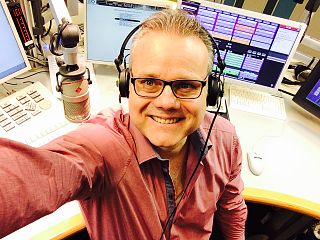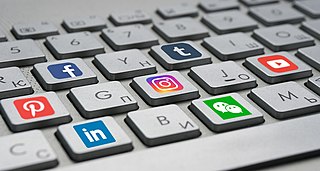
Plastic surgery is a surgical specialty involving the restoration, reconstruction, or alteration of the human body. It can be divided into two main categories: reconstructive surgery and cosmetic surgery. Reconstructive surgery includes craniofacial surgery, hand surgery, microsurgery, and the treatment of burns. While reconstructive surgery aims to reconstruct a part of the body or improve its functioning, cosmetic surgery aims to improve the appearance of it. A comprehensive definition of plastic surgery has never been established, because it has no distinct anatomical object and thus overlaps with practically all other surgical specialties. An essential feature of plastic surgery is that it involves the treatment of conditions that require or may require tissue relocation skills.

Body dysmorphic disorder (BDD), also known in some contexts as dysmorphophobia, is a mental disorder defined by an overwhelming preoccupation with a perceived flaw in one's physical appearance. In BDD's delusional variant, the flaw is imagined. When an actual visible difference exists, its importance is disproportionately magnified in the mind of the individual. Whether the physical issue is real or imagined, ruminations concerning this perceived defect become pervasive and intrusive, consuming substantial mental bandwidth for extended periods each day. This excessive preoccupation not only induces severe emotional distress but also disrupts daily functioning and activities. The DSM-5 places BDD within the obsessive–compulsive spectrum, distinguishing it from disorders such as anorexia nervosa.

Body image is a person's thoughts, feelings and perception of the aesthetics or sexual attractiveness of their own body. The concept of body image is used in several disciplines, including neuroscience, psychology, medicine, psychiatry, psychoanalysis, philosophy, cultural and feminist studies; the media also often uses the term. Across these disciplines, there is no single consensus definition, but broadly speaking, body image consists of the ways people view themselves; their memories, experiences, assumptions, and comparisons about their appearances; and their overall attitudes towards their respective heights, shapes, and weights—all of which are shaped by prevalent social and cultural ideals.
Muscle dysmorphia is a subtype of the obsessive mental disorder body dysmorphic disorder, but is often also grouped with eating disorders. In muscle dysmorphia, which is sometimes called "bigorexia", "megarexia", or "reverse anorexia", the delusional or exaggerated belief is that one's own body is too small, too skinny, insufficiently muscular, or insufficiently lean, although in most cases, the individual's build is normal or even exceptionally large and muscular already.

Cosmetic advertising is the promotion of cosmetics and beauty products by the cosmetics industry through a variety of media. The advertising campaigns are usually aimed at women wishing to improve their appearance, commonly to increase physical attractiveness and reduce the signs of ageing.
Reid Ewing is an American actor and musician known for his role as Dylan in the ABC comedy Modern Family and as Charlie Plunk in the TV series Zeke and Luther (2009–2011).

Instagram is a photo and video sharing social networking service owned by Meta Platforms. It allows users to upload media that can be edited with filters, be organized by hashtags, and be associated with a location via geographical tagging. Posts can be shared publicly or with preapproved followers. Users can browse other users' content by tags and locations, view trending content, like photos, and follow other users to add their content to a personal feed. A Meta-operated image-centric social media platform, it is available on iOS, Android, Windows 10, and the web. Users can take photos and edit them using built-in filters and other tools, then share them on other social media platforms like Facebook. It supports 32 languages including English, Spanish, French, Korean, and Japanese.
The feminine beauty ideal is a specific set of beauty standards regarding traits that are ingrained in women throughout their lives and from a young age to increase their perceived physical attractiveness. It is experienced by many women in the world, though the traits change over time and vary in country and culture.

A selfie is a self-portrait photograph or a short video, typically taken with an electronic camera or smartphone. The camera would be usually held at arm's length or supported by a selfie stick instead of being controlled with a self-timer or remote. The concept of shooting oneself while viewing their own image in the camera's LCD monitor is also known as self-recording.

Facetune is a photo and video editing application used to edit, enhance, and retouch photos on a user's iOS or Android device created by Lightricks. The app is often used for portrait and selfie editing.
Cosmetic surgery, also referred to as aesthetic surgery, is a surgical procedure which endeavours to improve the physical aspects of one's appearance to become more aesthetically pleasing. The continuously growing field of cosmetic surgery is closely linked with plastic surgery, the difference being, cosmetic surgery is an elective surgery with the sole purpose to enhance the physical features of one's appearance. Plastic surgery is performed in order to rectify defects to reinstate normality to function and appearance. Cosmetic surgical procedures are generally performed on healthy functioning body parts, with the procedure being optional not medically necessary. The inevitable aim of cosmetic surgery is to enhance one's image, encompassing reducing the signs of aging and/or correction of a believed deviation on one's body in turn it is surrounded by controversy. Although the implementation of cosmetic surgery within Australian society is growing, the trade has struggled to find its place within the Australian culture.

Korean beauty standards have become a well-known feature of Korean culture. In 2015, a global survey by the International Society of Aesthetic Plastic Surgeons placed South Korea in the top ten of countries who had the highest rate of cosmetic surgeries.
Snow is an image messaging and multimedia mobile application created by Camp Mobile, a subsidiary of South Korean internet search giant Naver Corporation. It features virtual stickers using augmented reality and photographic filters. Pictures and messages sent through Snow are only accessible for a short time.

Body positivity is a social movement that promotes a positive view of all bodies, regardless of size, shape, skin tone, gender, and physical abilities. Proponents focus on the appreciation of the functionality and health of the human body, instead of its physiological appearance.
Culture of cosmetic surgery is a set of attitudes and behavior regarding making changes to one's appearance via plastic surgery. World War I left thousands of soldiers with unprecedented levels of facial damage, creating a massive need for reconstructive surgery. Harold Gillies of New Zealand developed methods to restore function and structure to the faces of soldiers and these processes rapidly gained popularity. During the 1940s and 50s, personal appearance became more emphasized in the United States. As beauty standards changed, new products and techniques were developed to meet those demands.

Social media can have both positive and negative impacts on a user's identity. Psychology and Communication scholars study the relationship between social media and identity in order to understand individual behavior, psychological impact, and social patterns. Communication within political or social groups online can result in practice application of those identities or adoption of them as a whole. Young people, defined as emerging adults in or entering college, especially shape their identities through social media.

With the spread of smartphones and the rise of social media in China, the act of taking selfies has become a new type of social culture that influences the economy, generating the "new form of self-disclosure" that affects the construction of individual identities and the existing beauty standards.
An Instagram face is a social trend for women to adjust their features to conform to a single template, either by applying filters to their photographs on social media, or via cosmetic surgery. The template face is young, with poreless, unwrinkled skin and plump, high cheekbones. It has catlike (uplifted) eyes and long lashes; it has a small, symmetrical nose and lush lips. It has a blank expression. According to Jia Tolentino, the face is exotic but distinctly white, and ambiguously "ethnic". The face has been described as "well-tanned, with South Asian brows and eye shape, African-American lips, Caucasian nose, and Native American/Middle Eastern cheeks."

Filters are digital image effects often used on social media. They initially simulated the effects of camera filters, and they have since developed with facial recognition technology and computer-generated augmented reality. Social media filters—especially beauty filters—are often used to alter the appearance of selfies taken on smartphones or other similar devices. While filters are commonly associated with beauty enhancement and feature alterations, there is a wide range of filters that have different functions. From adjusting photo tones to using face animations and interactive elements, users have access to a range of tools. These filters allow users to enhance photos and allow room for creative expression and fun interactions with digital content.












